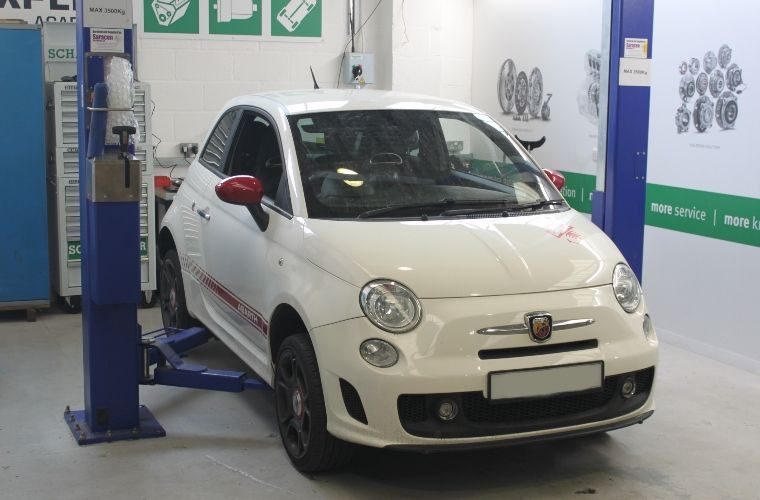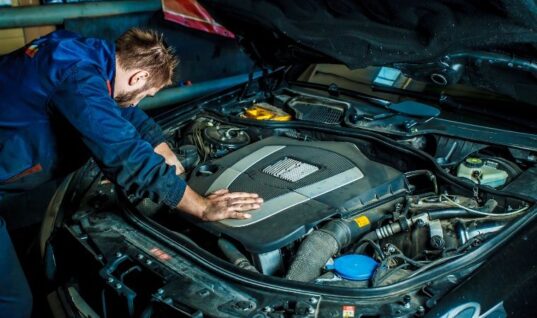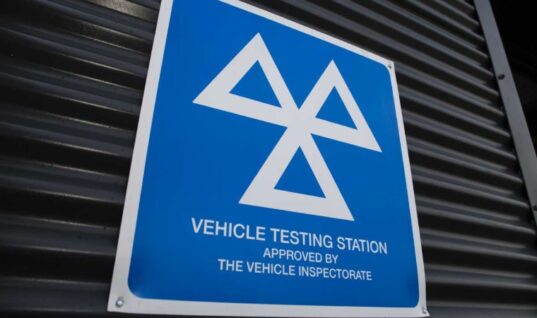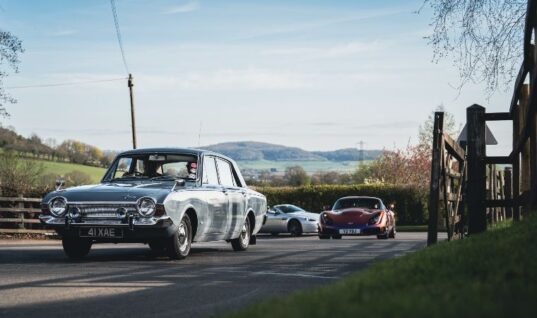Fiat 500’s sporty little offspring set a challenge larger than the car itself.
With a book time of 5.5 hours and a manufacturer recommending the engine should be removed to change the clutch, we felt that was a bit traumatic (and impossible) so we set out with a more conventional approach even if it was going to take us longer.
When it was comfortably on the ramp (take care of the Arbath body kit on the ramp legs), we realised we were going to have to modify a standard socket if we wanted to remove the driveshaft nuts.
A generous radius in the cavity (figure one) prevents us from using a standard socket, so we decided to leave the wheels on and swing the complete strut assemblies with driveshafts attached to release the CV joints from the gearbox.
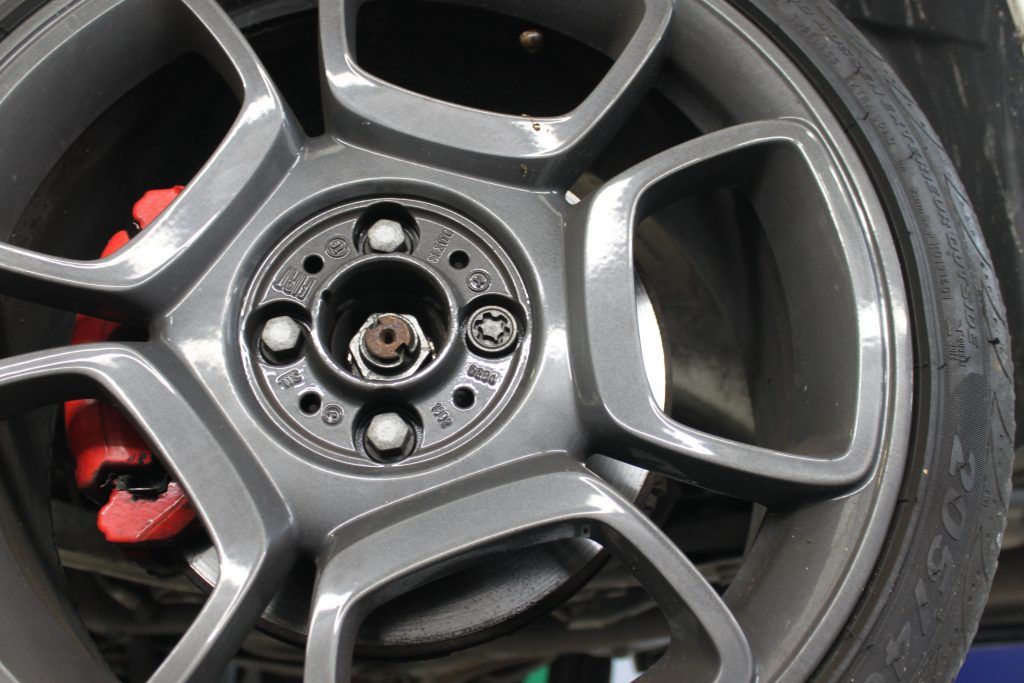
After more observation it was clear the battery and tray needed to be removed to gain access to the gearbox mount and upper bell housing bolts so we set to.
First, disconnect the battery terminals and strap to lift the battery out of the car.
With the Fiat being such a small car, most things under the bonnet were attached to the battery tray (figure two) by a myriad of clips and they all need to be removed.

Disconnect and remove the diverter valve with its flashy red filter (figure three) then disconnect the two ECU plugs.

There’s quite a few cables, hose retaining clips and then the three fixings, the battery tray can be lifted free (figure four).

Needing a break from ‘clip designers heaven’, we ventured underneath the car and released the bottom ball joints and the three bolts retaining the driveshaft support bearing (figure five) in its housing.

The gearbox was entombed above the subframe but with the left-hand subframe side leg removed we may tease it out, however this required the removal of the left-hand wheel arch liner and the front bumper cover.
Both are retained with nuts and screws.
Don’t forget to disconnect the spotlights and indicators when you can see the connectors.
With the bumper cover removed you can see the left-hand subframe leg retaining bolts are shared with the bumper armature (figure six), so these were removed too.
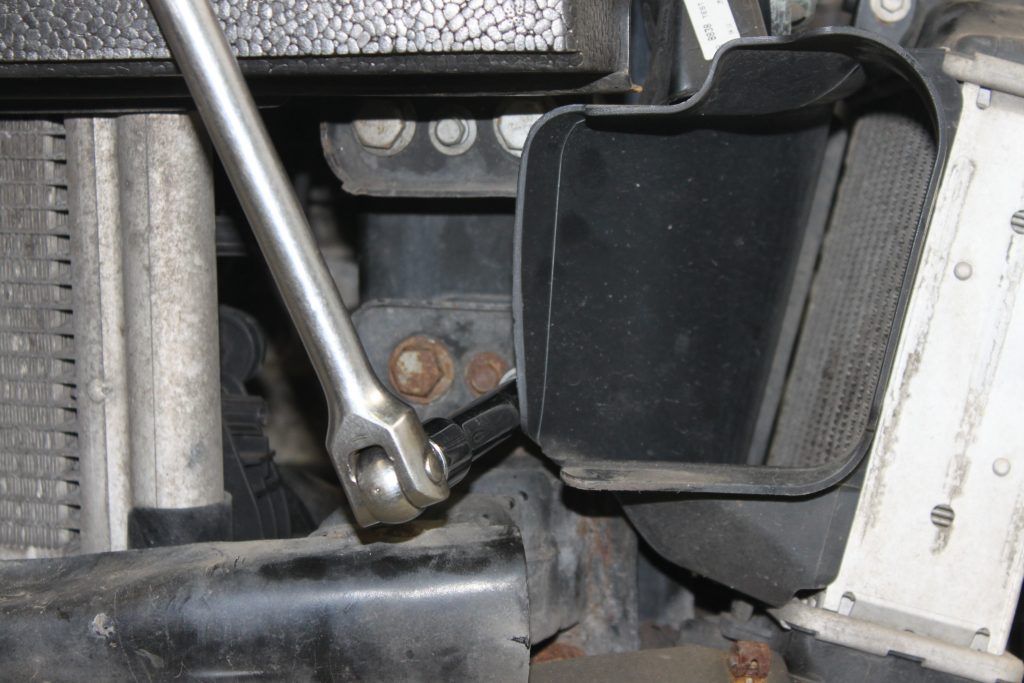
At the rear of that leg are two additional fixing which also need to be removed.
Exhaust pipe support bracket was in the way of some bell housing bolts so that needed to be removed.
At this point it became clear the whole subframe needed to be lowered, except the right-hand leg.
So, after disconnecting the oxygen sensor lead multiplug and unclipping the lead, the subframe bolts needed to be loosened.
The steering rack and anti roll bar can be left in place, so we removed the bolts retaining them to the subframe.
After removing the engine tie bar mounting bracket bolt and strapping up the steering rack to ensure it stayed where it was, the subframe bolts were removed and it was carefully lowered (figure seven).
We could now go back up top to release more clips, starting with the water temp sensor plug and all the other multi plugs preventing the harness from being stowed safely out of the way of the bell housing bolts.
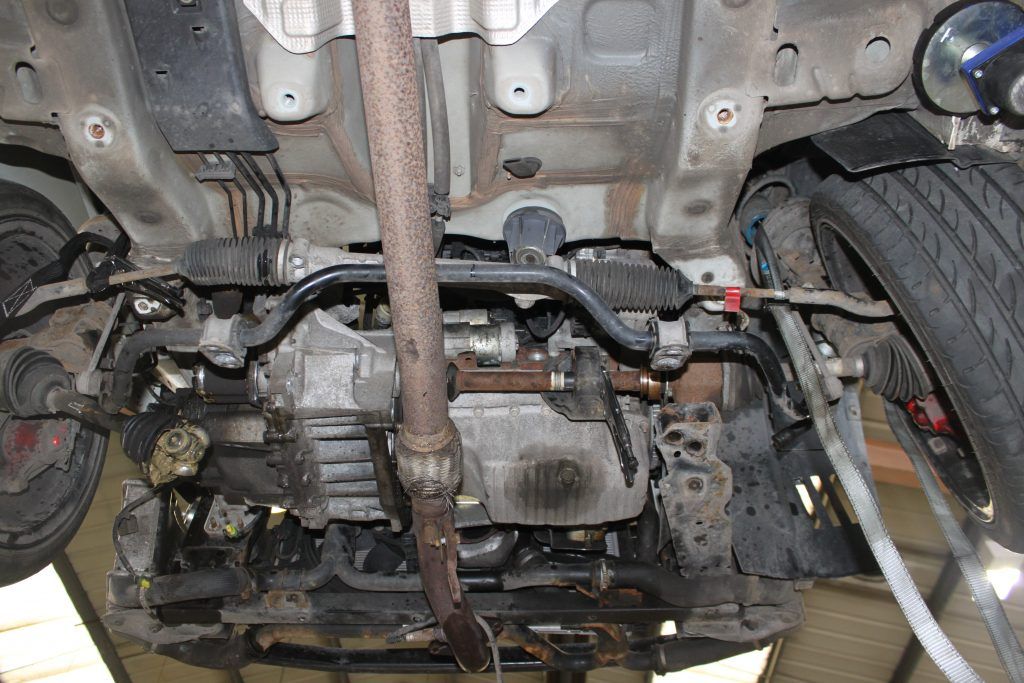
The intercooler pipe is retained by a bracket and nut that needs removing.
The clutch concentric slave cylinder can be disconnected and the pipe stowed safely after removing its clips.
After removing the upper bell housing and starter motor bolts, you’ll need to support the engine and gearbox.
We used two transmission jacks, one for each, and then removed the driveshaft CV joints from the gearbox.
We had a split boot on the left-hand joint so it came apart when pulled.
The gearbox is supported by a mount on the left-hand side with three bolts conveniently on the end of the gearbox in the wheel arch.
Remove these and then the lower bell housing bolts can be removed, leaving the gearbox and engine to be split.
Before removing the old clutch, always observe the direction the clutch plate is fitted (figure eight),.
In this case ‘Lato Cambio’ – Italian gearbox-side – but ideally sit the cover and plate together in the correct orientation until you have the new parts fitted in a similar fashion.

After cleaning the bell housing and carefully replacing the CSC following any instructions in the box, the new clutch can be fitted with a clutch alignment tool on the dual mass flywheel.
Ensuring the gearbox dowels are in place, the gearbox can then be replaced and the rest of the car can be reassembled – remember to refit all of those clips.
Information on Schaeffler products, fitting instructions, repair times and much more can be found on the REPXPERT garage portal by selecting ‘more details’ below.

